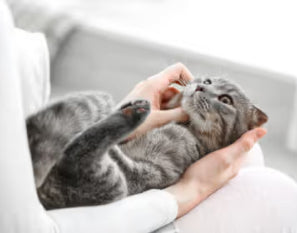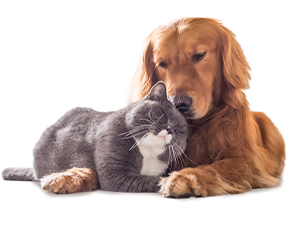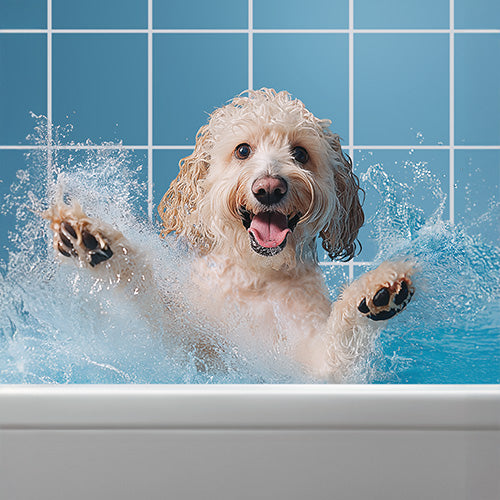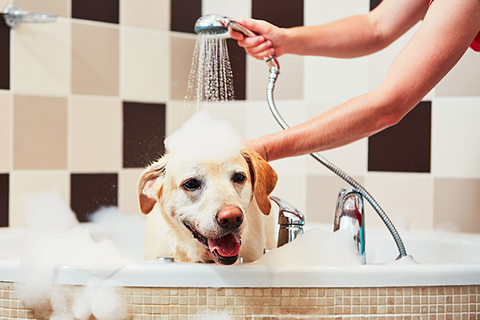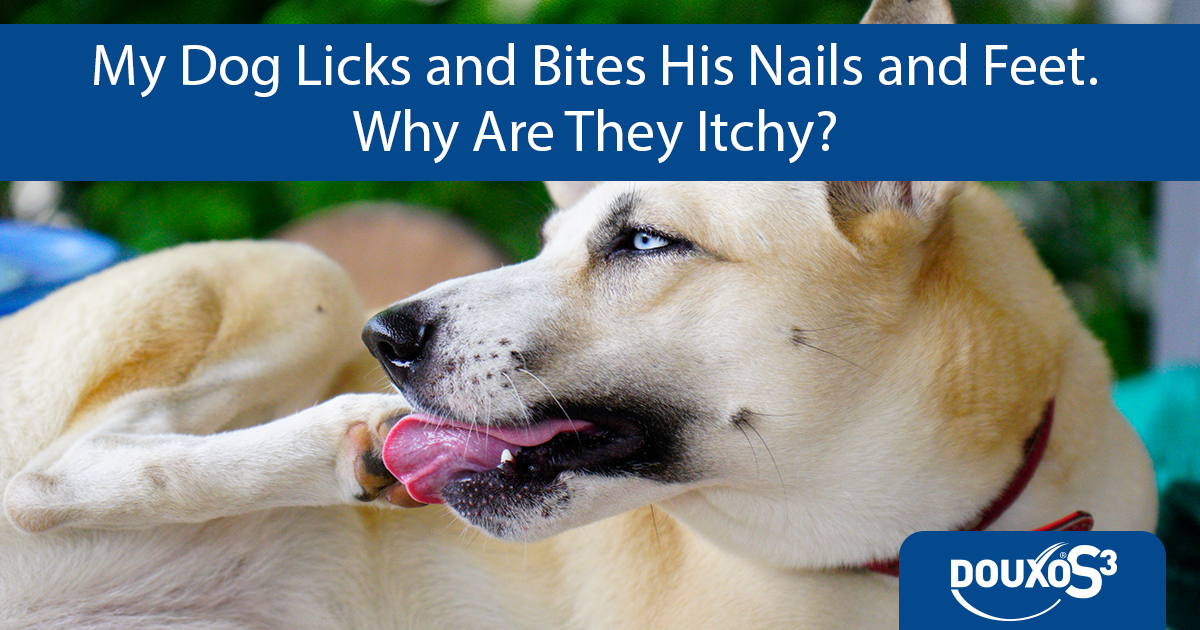
My dog licks and bites his nails and feet. Why are they itchy?
Imagine walking barefoot… You can feel the soft and fresh touch of the grass, or the warmth of the sand. It’s nice, right? Now imagine walking on cold, hard concrete or stepping on little stones. Quite different, isn’t it? Dogs and cats walk barefoot in all situations and, while their feet are better adapted than humans’, they are continuously exposed to potential damages.
If your pet is licking or biting at their nails and feet, they might be experiencing pruritus (itchiness), as they try to relieve an unpleasant sensation. Inflammation of the feet like this is usually called “pododermatitis”. Its signs can be subtle, leading many owners to believe that their pet is only cleaning their feet. However, if your dog is spending more time than usual on their paws, it’s worth checking in with your vet.
Why is my dog licking their feet?
It’s common to assume that dogs lick their feet out of boredom or as part of their routine. However, there’s usually an underlying reason for this behavior. In addition to licking and biting, dogs may also show symptoms like lameness, swelling, bleeding, or sensitivity when their feet are touched. Look closely, and you might even spot brown staining of the fur, discharge, or damaged nails.
Common causes of itchy or painful feet
Many issues can lead to itchy or painful feet in dogs. Most frequently, broken nails or foreign bodies are found. Here are some common causes to keep an eye out for:
- Trauma – This is, by far, the most common cause of dogs paying more attention to their feet. Alongside excessively licking the foot to try and relieve the pain, you may also see signs of lameness, swelling and bleeding.
- Foreign bodies – Grass seeds and other debris can get lodged in your dog’s paws during walks, causing irritation, that can make them difficult to locate and remove.
- Infection – The skin between your dog’s toes is the ideal place for bacteria and yeast to proliferate. Most infections occur secondarily to other diseases, due to disruption of the skin barrier occurring when dogs lick their feet.
- Allergies – Atopic dermatitis and food allergies frequently result in a generally itchy dog. Many dogs will also have itchy feet, causing them to spend increased time licking their paws – in fact, itchy feet are one of the most important indicators of atopy or systemic allergic skin disease. Treatment may be required long-term to control pruritus, and relapses are common.
- Demodicosis – Demodex mites, who live happily without causing any harm on the skin, can in some situations cause generalised skin disease, and specifically affect your pet’s feet and cause pododermatitis. These mites are only visible with a microscope, so skin samples are needed to diagnose demodectic infection.
- Arthritis – Dogs may lick their paws if any joints in the foot are painful, so excessive licking can be an early indicator for arthritis.
- Dermatophytosis (Ringworm) – Ringworm is a fungal infection that usually causes generalised scaling and alopecia (hair loss). However, it can also affect your dog’s nails, causing inflammation around the nail bed and deformed nails.
- Leishmaniasis – This disease is transmitted by sand flies so is mainly seen in countries with an established sand fly population, including Southern Europe, parts of the USA and the Mediterranean. However, due to imported dogs and international pet travel, Leishmaniasis is now seen in most countries. Leishmania causes a range of clinical signs, from generalised illness to skin disease, with some dogs developing characteristic nail abnormalities.
- Autoimmune disease – Systemic Lupus Erythematosus is an autoimmune disease that causes a range of systemic illnesses but can also affect nail growth, causing nail deformities. Life-long treatment is usually needed. Likewise, Lupoid Symmetrical Onychodystrophy causes abnormal nail growth and eventual nail loss. Dogs may also become progressively lame as the nails slough off. Regrowth of the nails should occur following successful treatment, though relapses may happen.
- Cancer of the claw bed – This may show as a swollen toe, with one or more toes affected. Dogs may also be lame and their toes painful when touched. A biopsy is needed to diagnose this condition.
- Behavioural issues – Dogs may also excessively lick their paws and chew their nails as a behavioural response. You may also see recurrent skin infections as your dog repeatedly traumatises the skin over their foot. In severe cases, your vet may advise referral to a Veterinary Behaviourist registered with the Association of Pet Behaviour Counsellors.
Caring for dogs with foot and nail disease
Initial treatment is needed to resolve the cause of your dog’s foot or nail problem. This requires veterinary attention sooner rather than later!
Treatment may involve medication, pain relief, parasitic treatments or steroids and in some cases, surgery. For certain conditions like atopic dermatitis, long-term management may be required to keep your dog comfortable. Frequently, the regular use of topical treatments, such as mousses, shampoos and wipes are needed to prevent flare-ups.
If your dog has itchy feet then DOUXO® S3 CALM pads are perfect for soothing irritated skin, enabling easy cleaning between the toes, helping to prevent allergy relapses. For dogs prone to skin infections, DOUXO® S3 PYO pads are ideal for using around the home to clean the feet and prevent future infections. These convenient wipes have antibacterial and anti-yeast action, so disinfect the skin while maintaining a healthy skin barrier.
Teaching your dog to have their feet handled
Handling your dog’s feet can help you catch problems early. Many dogs don’t enjoy this at first, but a little practice can go a long way. It can also make nail clipping easier and help you to dry your pet’s feet after walks.
Tips for handling your dog’s feet:
- Practice daily, starting with just a few minutes.
- Use a non-slip surface to ensure your dog feels secure.
- Start by getting your dog used to having their legs touched and slowly work down to their feet.
- Then get your dog used to having their paw lifted, so you can examine their pads.
- Eventually, your dog will allow you to touch their nails and check their feet for wounds and sores.
- Start with one foot and work up to being able to handle all four feet.
- Reward them with treats when they stay calm and relaxed.
Handling their paws regularly also makes it easier to trim nails and clean their feet after walks. If your dog remains anxious, talk to your vet for further guidance.
In Conclusion
Dogs may chew their nails or lick their paws for various reasons, and it’s often a sign of an underlying issue. If you notice these behaviors, consult your vet to identify the cause and explore treatment options.








